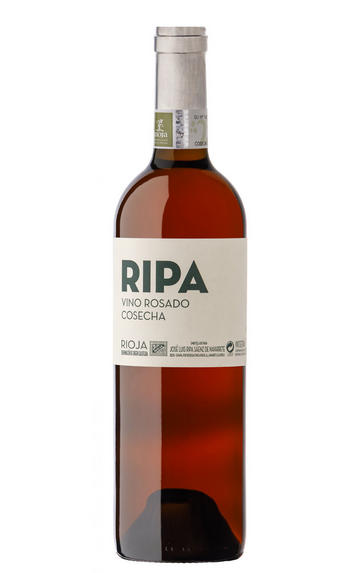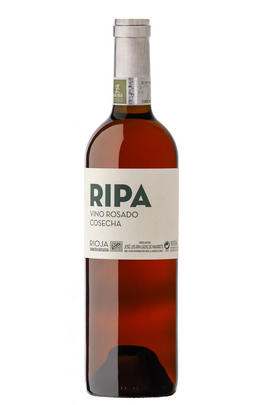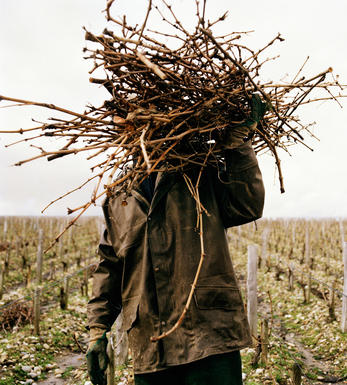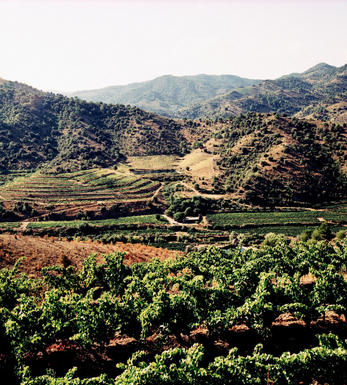
2018 Ripa Rosado, José Luis Ripa Sáenz de Navarrete, Rioja, Spain

Critics reviews
The rosé 2018 RIPA Vino Rosado follows the same path as the 2017, 60% Garnacha and 40% Tempranillo aged and matured in 225- and 500-litre oak barrels where the wine matured for 30 months. The vintage was quite cold, and the grapes were picked on October 20. The wine has a more vibrant palate and a lower pH, with more freshness.
The long élevage marks it, so it takes on a specific profile with nutty and spicy notes and a hint of nutmeg and cinnamon. It's spicy, vibrant, still round and lush, with a dark colour, very different from the pale Provençal examples... 6,200 bottles were filled in December 2021.
Drink 2022 - 2026
Luis Gutiérrez, Wine Advocate (July 2022)
About this WINE

José Luis Ripa Sáenz de Navarrete
José Luis Ripa Sáenz de Navarrete is a producer with an intimate understanding of Rioja's winemaking history. Having spent numerous years working with esteemed and renowned houses in Rioja, he has garnered extensive knowledge about the intricacies of the winemaking process and the region's unique terroir.
Being married to Maria Jose Lopez de Heredia, a prominent figure in the wine industry and the owner of the renowned López de Heredia Viña Tondonia winery, influenced and deepened his passion for winemaking even further.
Having witnessed the diverse aspects of the wine business, José embarked on his winemaking journey by creating his own label. His venture culminated in producing a classic Spanish Aged Rosado, a rosé wine sourced from vineyards occupying one hectare in the picturesque Najerilla Valley in Rioja Alta. This location is known for its favourable climate and soil conditions, contributing to the exceptional quality of the grapes grown there.
His decision to release his wine with a bit of bottle age sets his wine apart. This approach adds a unique dimension to the wine, allowing it to develop additional complexity and depth before it reaches consumers' hands. By drawing on his profound understanding of Rioja's winemaking heritage and employing a hands-on approach to crafting his wine, José Luis Ripa Sáenz de Navarrete creates wines that reflect his passion, expertise, and respect for the region's winemaking traditions.

Rioja
Rioja is known primarily for its reds although it also makes white wines from the Viura and Malvasia grapes and rosés mainly from Garnacha. Most wineries (bodegas) have their own distinct red wine formula, but are normally a combination of Tempranillo, Garnacha and sometimes Graciano. Other red varieties recently approved into the Denominación de Origen Calificada (DOCa) regulations are the little-known Maturana Tinta, Maturana Parda, and Monastel (not to be confused with Monastrell). The most important of these by far is the king of native Spanish varieties, Tempranillo, which imbues the wines with complex and concentrated fruit flavours.
The Garnacha, meanwhile, bestows its wines with warm, ripe fruit and adds an alcohol punch. Graciano is an améliorateur grape (one that is added, often in small proportions, to add a little something to the final blend) and is found mainly in Reserva and Gran Reserva wines, albeit in small quantities (two to five percent), adding freshness and aroma, and enhancing the wines' ageing potential.
Crianza wines are aged for one year in oak followed by maturation for one year in bottle before being released for sale. Reservas must undergo a minimum of three years’ ageing before release, at least one of which should be in oak casks. Finally, Gran Reservas, which are only produced in the finest vintages, must spend at least five years maturing, of which at least two must be in oak.
Geographically, Rioja is divided in to three districts: Alavesa, Alta and Baja. Rioja Alavesa lies in the northwest of the La Rioja region in the Basque province of Álava. Along with Rioja Alta, it is the heartland of the Tempranillo grape. Rioja Alta, to the north-west and south of the Ebro River in the province of La Rioja, stretches as far as the city of Logroño. Elegance and poise is the hallmark of wines made here with Rioja Alta Tempranillo. Mazuelo (Carignan) is occasionally added to wines from this area to provide tannins and colour. Rioja Baja, located to the south-east, is the hottest of the three districts and specialises in Garnacha.
Rioja has witnessed a broad stylistic evolution over the years. The classic Riojas pioneered by Murrieta and Riscal in the 19thcentury were distinguished by long oak-barrel-ageing whereas the modern style, represented by Marqués de Cáceres since 1970, showcases the fruit and freshness of Tempranillo, keeping oak ageing to the legal minimum. The post-modern school that emerged in the late 1990s from producers like Palacios Remondo and Finca Allende concentrate on making wines from old vines or specific vineyard plots to accentuate the terroir, and using larger proportions of minority varietals such as Graciano.
The alta expression wines, pioneered by Finca Allende (among others) and later taken up by almost every other producer in Rioja, represent the newest flagship category in Rioja. Alongside the traditional Gran Reservas, alta expression wines are limited production and come from low-yielding vines, often from a single vineyard, and are hand-picked. Excellent examples of this style are Artadi's Pagos Viejos and El Pison.
However, modernisation has not held back the continuation of successful traditional styles as well. Happily long-established houses such La Rioja Alta, CVNE and Marques de Vargas continue to make graceful, old style wines better than ever before.
White Rioja is typically produced by the Viura grape which must comprise at least 51 percent of the blend; the rest can be made up by other, recently-authorised varieties, namely Sauvignon Blanc, Chardonnay and Verdejo, as well as the native Maturana Blanca, Tempranillo Blanco, and Turruntés (not to be mistaken for Torrontés).
Recommended Producers:
Finca Allende, Amezola de la Mora, Artadi, CVNE, Marqués de Vargas, Palacios Remondo, La Rioja Alta, Murrieta.

Grenache/Garnacha
Grenache (Noir) is widely grown and comes in a variety of styles. Believed to originate in Spain, it was, in the late 20th century, the most widely planted black grape variety in the world. Today it hovers around seventh in the pecking order. It tends to produce very fruity, rich wines that can range quite widely in their level of tannin.
In many regions – most famously the Southern Rhône, where it complements Syrah and Mourvèdre, among other grapes – it adds backbone and colour to blends, but some of the most notable Châteauneuf du Pape producers (such as Château Rayas) make 100 percent Grenache wines. The grape is a component in many wines of the Languedoc (where you’ll also find its lighter-coloured forms, Grenache Gris and Blanc) and is responsible for much southern French rosé – taking the lead in most Provence styles.
Found all over Spain as Garnacha Tinta (spelt Garnaxa in Catalonia), the grape variety is increasingly detailed on wine labels there. Along with Tempranillo, it forms the majority of the blend for Rioja’s reds and has been adopted widely in Navarra, where it produces lighter styles of red and rosado (rosé). It can also be found operating under a pseudonym, Cannonau, in Sardinia.
Beyond Europe, Grenache is widely planted in California and Australia, largely thanks to its ability to operate in high temperatures and without much water. Particularly in the Barossa Valley, there are some extraordinary dry-farmed bush vines, some of which are centuries old and produce wines of startling intensity.


Buying options
Add to wishlist
Description
The rosé 2018 RIPA Vino Rosado follows the same path as the 2017, 60% Garnacha and 40% Tempranillo aged and matured in 225- and 500-litre oak barrels where the wine matured for 30 months. The vintage was quite cold, and the grapes were picked on October 20. The wine has a more vibrant palate and a lower pH, with more freshness.
The long élevage marks it, so it takes on a specific profile with nutty and spicy notes and a hint of nutmeg and cinnamon. It's spicy, vibrant, still round and lush, with a dark colour, very different from the pale Provençal examples... 6,200 bottles were filled in December 2021.
Drink 2022 - 2026
Luis Gutiérrez, Wine Advocate (July 2022)
wine at a glance
Delivery and quality guarantee